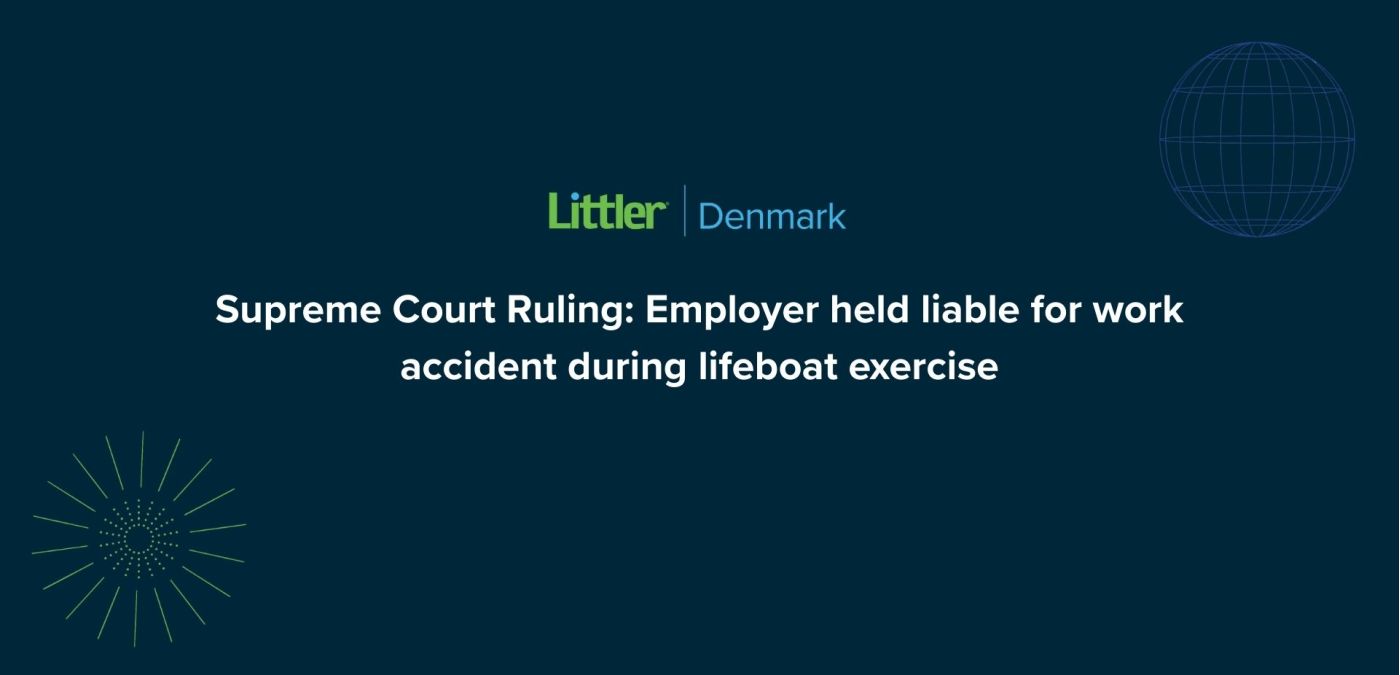
Supreme Court Decision: Employer Held Liable for Work Accident During Lifeboat Exercise
Supreme Court Order of 26 September 2025 – Case No. BS-62638/2024-HJR
Employer’s responsibility during lifeboat drills
The Supreme Court has ruled in a case in which an employee was injured during a lifeboat drill on a drilling platform in the North Sea. The drill took place in August 2016 and was conducted as a so-called live launch, where a closed lifeboat was launched in free fall from a height of approximately 45 meters.
The drill had been initiated on the basis of a complaint from the Danish Working Environment Authority that the lifeboats had not been used since 2010.
During the exercise, the employee was sitting in the forward-facing captain's seat and sustained an injury upon impact with the water. The injury led to sick leave, and the incident was recognized as a work-related accident under the Danish Workers’ Compensation Act.
However, the employee filed a claim against the company for additional compensation under the Danish Liability for Damages Act, arguing that the exercise had not been organized in a sufficiently safe manner.
Insufficient risk assessment – Employer failed to minimize the risk
The Supreme Court found that the employer had acted negligently, as the safety risks associated with the lifeboat drill had not been sufficiently reduced.
While the Supreme Court applied the general negligence standard, the Supreme Court assessed the employer’s liability in light of obligations under occupational health and safety legislation, including the requirement to reduce risks as far as it is reasonably practicable.
The court emphasized that launching the lifeboat in free fall from a height of approximately 45 meters posed a clear risk of injury, and that the drill – which did not take place in an actual emergency – could have been carried out in a less risky manner. Nor was it necessary for the employee to sit in the forward-facing captain's seat, which was more exposed.
Supreme Court opens the door for further compensation claims
The Supreme Court ruled that the employer was liable for the injury and ruled that the case could proceed in the district court regarding the calculation of the claim.
Littler notes
The ruling shows that an employer cannot uncritically rely on existing procedures during training exercises if these involve unnecessary risks. Even in simulated emergency situations, the employer must actively assess whether the exercise can be carried out in a safer way – and plan accordingly.
Littler recommends that employers – especially in high-risk industries – review their internal training and exercise procedures with a focus on whether risks have been minimized as much as possible, even in routine situations.
